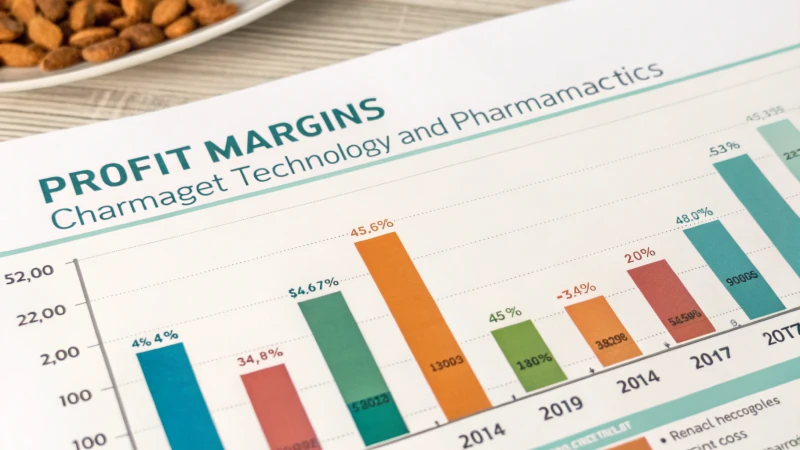
Profit margin is one of the most critical financial metrics in the pet food industry, determining how much revenue is retained as profit after covering costs. Whether you are a manufacturer, retailer, or private label producer, understanding how to calculate profit margins accurately is essential for setting prices, managing costs, and maximizing profitability.
Profit margin for pet food products is calculated using the formula:
Profit Margin =
This formula helps businesses determine the percentage of revenue that remains after accounting for production, distribution, and marketing expenses. The key to increasing profit margins lies in reducing costs while maintaining competitive pricing.
This guide will break down the different types of profit margins, how to calculate them step by step, and provide practical strategies for improving profitability in the pet food industry.
1. Understanding the Different Types of Profit Margins
Profit margin can be calculated at different stages of the business process:
A. Gross Profit Margin
Definition: Measures profitability after deducting the cost of goods sold (COGS) but before operating expenses.
Gross Profit Margin =
- Used for: Evaluating production efficiency and pricing strategy.
- Ideal Range in Pet Food Industry: 25% - 50%, depending on the product type.
B. Operating Profit Margin
Definition: Considers all operating expenses, including labor, marketing, rent, and administrative costs.
Operating Profit Margin =
- Used for: Assessing overall business efficiency.
- Ideal Range in Pet Food Industry: 10% - 25%.
C. Net Profit Margin
Definition: The final profit percentage after all expenses, including taxes and interest, are deducted.
Net Profit Margin =
- Used for: Measuring the company's overall profitability.
- Ideal Range in Pet Food Industry: 5% - 15%.
2. Step-by-Step Guide to Calculating Profit Margin
Let’s break down the calculation using an example:
Scenario: Calculating the Profit Margin for a Premium Dry Kibble
- Selling Price per Bag: $50
- Cost of Goods Sold (COGS): $25
- Operating Expenses: $10
- Taxes & Other Costs: $5
Step 1: Calculate Gross Profit Margin
Gross Profit = Revenue - COGS = 50 - 25 = 25
Gross Profit Margin =
Step 2: Calculate Operating Profit Margin
Operating Profit = Gross Profit - Operating Expenses = 25 - 10 = 15
Operating Profit Margin =
Step 3: Calculate Net Profit Margin
Net Profit = Operating Profit - Taxes & Other Costs = 15 - 5 = 10
Net Profit Margin =
| Metrico | Calculation | Risultato |
|---|---|---|
| Margine di profitto lordo | (Revenue - COGS) ÷ Revenue | 50% |
| Margine di profitto operativo | (Operating Profit ÷ Revenue) | 30% |
| Margine di profitto netto | (Net Profit ÷ Revenue) | 20% |
3. Industry Benchmarks for Pet Food Profit Margins
Different types of pet food products have varying profit margins due to differences in production costs, pricing strategies, and consumer demand.
| Categoria alimenti per animali domestici | Margine di profitto lordo medio (%) | Net Profit Margin (%) |
|---|---|---|
| Crocchette secche | 25% - 35% | 5% - 15% |
| Cibo umido/confezionato | 30% - 40% | 10% - 20% |
| Crudo liofilizzato | 40% - 50% | 15% - 25% |
| Organic/Natural Pet Food | 35% - 45% | 10% - 20% |
| Prescription/Veterinary Diets | 40% - 50% | 15% - 30% |
| Treats and Supplements | 50% - 60% | 20% - 30% |
Key Insights:
- Dry kibble has the lowest margins due to mass production and competition.
- Freeze-dried, organic, and prescription pet food have higher margins because of premium pricing and specialized ingredients.
- Pet treats and supplements offer the highest profit margins due to lower production costs and impulse purchasing behavior.
4. Strategies to Improve Profit Margins in Pet Food
Maximizing profit margins requires a combination of cost efficiency, premium pricing, and supply chain optimization.
A. Reduce Ingredient and Manufacturing Costs
- Negotiate bulk purchasing agreements with ingredient suppliers.
- Optimize recipes to maintain quality while reducing expensive ingredients.
- Invest in automated manufacturing to lower labor costs.
B. Adjust Pricing Strategically
- Offer premium or functional benefits (e.g., probiotics, grain-free, high-protein) to justify higher prices.
- Use dynamic pricing based on demand, competitor pricing, and market trends.
- Implement subscription models for steady revenue.
C. Improve Distribution and Sales Channels
- Sell direct-to-consumer (DTC) through online platforms to avoid retailer markups.
- Expand into specialty pet stores that cater to high-income customers.
- Leverage e-commerce marketplaces like Amazon and Chewy for wider reach.
D. Minimize Marketing and Packaging Expenses
- Use digital marketing (social media, influencers) instead of expensive traditional advertising.
- Optimize packaging to reduce costs without compromising branding.
E. Diversify Product Line
- Introduce high-margin supplements and treats as add-on products.
- Offer limited-edition flavors to encourage repeat purchases.
- Develop private-label products for retailers to increase manufacturing revenue.
5. Common Pitfalls in Profit Margin Calculation
- Ignoring Hidden Costs: Failing to account for shipping, storage, and return costs can distort profit margin calculations.
- Overpricing Products: While premium pricing can boost margins, excessive pricing can reduce demand.
- Underestimating Competitor Pricing: Competitive pricing research is crucial to maintain market share.
- Ignoring Customer Acquisition Costs: High marketing expenses can lower actual profits.
Conclusion: Maximizing Profitability in Pet Food
Calculating profit margins is essential for setting prices, controlling costs, and optimizing profitability in the pet food industry. By understanding gross, operating, and net profit margins, businesses can make informed financial decisions and adjust their strategies accordingly.
Punti di forza:
- Typical pet food gross margins range from 25% to 50%.
- Higher-end products (organic, freeze-dried, supplements) have better margins.
- Cost control, premium pricing, and direct-to-consumer sales boost profitability.
Need Help Maximizing Your Pet Food Business’s Profit Margins?
Our team specializes in cost optimization, pricing strategy, and financial planning for pet food brands. Contact us today for expert consultation!









